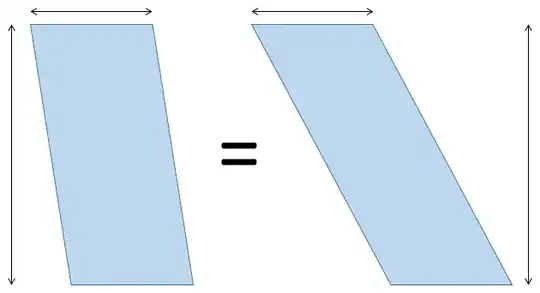I'm going to solve this a little different, with a proof.
I recreated your pic so I could edit it to show my proof. Also, I'm a little rusty on my proofs and math lingo, so take it easy on me, please.
a' = green triangle
b' = red trapezoid
d' = blue square
Line a'F equals b'F because it is the same line.
Line J equals G because line F bisects the edge of the larger square, as given.
The angle between lines E & J is complimentary to the angle between lines G & H.
Because of the last line, we know that line H equals 2F.
Because of the last line, we can draw another line from the intersection between lines F & G to the intersection between lines B & H and know that it is the same length as line G.
From this, we can see that line B equals E.
Because of this, line E equals H, so line H equals B.
This means b' + a' equals a square of the same volume as d'.
As there are 3 more unmarked pairs of a' and b', that means there are a total of 5 equal squares within the original square.
This means d' is 1/5 the area of the original square.
Going further:
Using parts of the above proof, we can see that a' is 1/4 the area of d'.
Which means that b' is 3/4 the area of d'.
I may have skipped parts of the proof, but I considered those parts as "given." I also didn't want to clutter things by trying to prove that all the triangles are the same and that all the trapezoids are the same.
I haven't done a proof in around 20 years, so this proof might not be 100% correct for a proof, but it is correct for the idea.
I don't have enough reputation to post an image, so it's at https://i.stack.imgur.com/ktQLP.png.

